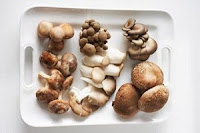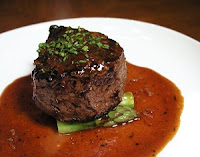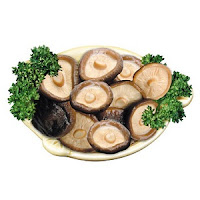So far, we may often eat mushrooms but do not know more about
the efficacy of this fungus as well as benefits. Fungi are plants that have a
spore cell but do not have cholorophyll, and can live between biotic and
abiotic stresses.
Some fungi safe to eat humans and even some medications are
considered nutritious, such as mushroom, oyster mushroom, champignon and
shiitake mushrooms. Example of the poisonous mushroom is amanita muscaria and
also known as the "destroying angel"
There are also parasitic, meaning that harmful fungi or
other organisms that are still living (plants, animals, or humans which are
even so alive). The presences of the fungus are usually the cause of the
disease or disorder.
There are hundreds of types of fungi are classified as edible,
but until now, only about 10 species have been cultivated commercially. One is
a fungus that is a quite tasty mushroom. This type of mushroom has delicious
flavor, savory, and not easily change its form if it is cooked, so it is used for
a variety of cuisine.
Protein content of mushrooms is quite high, as well as
calcium and phosphorus content. In addition, fungi have the digestibility of
high and have fairly low fat content. Fat consists of free fatty acids mono
ditriglieserida, sterols, and phoshpolipida.
Mushrooms are also a good source of vitamins such as
thiamin, niacin, biotin and ascorbic acid. Vitamin A and D are rarely found in
fungi, but the white oyster mushroom contained ergosterol that is precursors of
vitamin D. Mushrooms are generally rich in minerals, especially phosphorus.
Other minerals contained in between calcium and iron.
Some types of mushrooms as food ingredient
Black Truffle, growing up in the soil near by the roots of
large trees in the forests of Europe. It has irregular shape and clumping. The
price is very expensive because there's only during certain seasons. Usually it
served in a big restaurant across the world. Because it has a smell like the mud,
so these mushrooms cannot be replaced by other mushroom.
White Oyster – Actually this oyster have a type of needle in
accordance with the color of ash oyster, red oyster, yellow and white. The
latter type is much favored by most people Asia. About the taste, no difference
between white oyster mushrooms with others.
Shiitake is a type of mushroom that is widely used in Japanese and Chinese cuisine. This kind is also known as hioko. Have the efficacy to stimulate the growth of the immune system. Shitake mushrooms may also lower blood cholesterol levels. Even the shitake mushrooms are known as fungal drugs that have been potential as anti-tumor and anti-virus.
Shiitake is a type of mushroom that is widely used in Japanese and Chinese cuisine. This kind is also known as hioko. Have the efficacy to stimulate the growth of the immune system. Shitake mushrooms may also lower blood cholesterol levels. Even the shitake mushrooms are known as fungal drugs that have been potential as anti-tumor and anti-virus.
Maitake is the most popular mushroom in Japan that has
anti-cancer properties? If it consumed regularly as foods that are accompanying
tea, this kind can prevent certain cancers.
Enokitake mushrooms (enoki mushrooms) are fungi food with
the body-shaped fruit of a long-term cultivation of white such as bean sprouts.
Furthermore, known as bean sprouts mushrooms, winter mushrooms, or the golden
needle mushrooms. In low temperate regions of the world, the fungus grows in
the wild about low air temperatures begin to fall until early spring.
That’s types of mushrooms and health benefits,
hopefully this article useful for you. Please leave your comments.





No comments:
Post a Comment